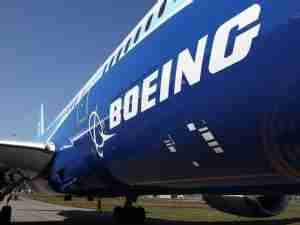Fitch Ratings has assigned a 'AA-' rating to the Department of Airports of the City of Los Angeles' (the department) $387 million new money subordinate revenue bonds series 2018A and its 'AA' rating to $227 million of senior lien refunding bonds series 2018B issued on behalf of the Los Angeles International Airport (LAX, or the airport). Fitch has also affirmed the 'AA' rating on approximately $3.5 billion senior revenue bonds and 'AA-' rating on LAX's $1.85 billion parity subordinate revenue bonds. The Rating Outlook for all bonds is Stable.
RATING RATIONALE
The ratings reflect superior credit characteristics including a strong underlying air trade service area, significant operational activity of 41.6 million enplanements supported by a diverse mix of domestic and foreign-flag carriers, favorable rate agreements with airlines, and very strong financial metrics consistent with the 'AA' category.
The scale of the capital program is significant at $9.6 billion through 2024, and additional borrowings will be required to provide portions of the funding. Airline costs will be on a rising trend. Upcoming infrastructure plans at the airport are also likely to use private sector partnerships for the landside access projects, which are still under development. Cost and execution risks could develop through the process; however, these concerns appear to be sufficiently mitigated by the airport's strong and resilient market position in the Los Angeles region and favorable fiscal position.
KEY RATING DRIVERS
Large Gateway Airport: Revenue Risk - Volume: Stronger
Extremely strong market economics reflected LAX's status as the nation's largest origination and destination (O&D) airport as well as one of the largest U.S. international gateway airports. The airport benefits from a strong and well-developed diversity of domestic and foreign-flag air carriers. Trends on passenger traffic and carrier expansion have been favorable in recent years. While alternate airports are within the Los Angeles metropolitan area, growth constraints at competing facilities allow LAX to capture over 79% of all enplaned passengers, including nearly all of the international market.
Sound Rate Agreements: Revenue Risk - Price: Stronger
The airport began implementing new carrier rate agreements in 2013, which has resulted in substantive progress towards greater equalization of its rates and charges using compensatory methodologies. These agreements with the airport's terminal tenants will also enhance LAX's long-term control of most of the terminal spaces. Airline cost levels were $15.02 per enplanement for fiscal 2017, remaining moderate for an international gateway airport while similarly providing financial flexibility. Airline costs are projected to rise significantly to the $25 range as the capital program reaches completion and costs are captured into the airline rate base.
LARGE-SCALE CAPITAL PROGRAM: Infrastructure Development/Renewal - Midrange
The airport is undertaking an ambitious $9.6 billion capital program (ending in FY2024) with a focus on a new midfield concourse and access improvements as well as additional airfield and terminal projects. Delivery on projects completed in recent years has been successful; however, additional infrastructure improvements are likely to take complex characteristics, including private partnerships for projects related to a new car rental center and automated people mover system.
CONSERVATIVE CAPITAL STRUCTURE: Debt Structure: Stronger (senior); Midrange (subordinate)
All of the existing senior and subordinated long-term airport debt is in fixed-rate mode, thus minimizing the risk for fluctuations in debt interest costs. Future debt issues are expected to remain in similar form. Covenants for rates and additional borrowings are relatively standard for the sector while all of the debt service reserves are cash funded.
FINANCIAL PROFILE
Current financial metrics such as debt service coverage (Fitch adjusted 2.2x of total senior and subordinate debt) and liquidity remain solid at over 400 days cash on hand. Leverage metrics are moderate at 5.1x on a net debt to cash flow available for debt service basis for all debt while debt to enplanements is competitive at about $120. As the full costs of the capital program, including an additional $5.6 billion in future debt borrowings, are phased in over the next five years, the projected coverage and leverage ratios are projected to remain close to historically strong levels but could be pressured in the event the airport underperforms on traffic and revenues.
Peers
Comparable Fitch-rated peers include Massachusetts-Boston (AA/Stable Outlook) and San Francisco (SFO; A+/Stable Outlook) airports. Both are international gateway, large-hub facilities with strong revenue risk profiles supported by large enplanement levels and competitive airline costs coupled with strong financial metrics. LAX has stronger coverage levels and lower leverage compared to SFO, but metrics are slightly weaker compared to Boston, which has a very low debt burden for a large hub airport enterprise.
RATING SENSITIVITIES
Future Developments That May, Individually or Collectively, Lead to Negative Rating Action:
--Material changes to the airport's current forecast to cost structure, cash reserve position, and/or additional indebtedness that lead to overall sustained leverage above 8x could negatively impact ratings.
Future Developments That May, Individually or Collectively, Lead to Positive Rating Action Positive:
--Unlikely in the near term in light of the size of the capital program underway with additional borrowings expected.
TRANSACTION SUMMARY
The airport intends to issue approximately $387 million in subordinate revenue bonds for funding capital projects including the new midfield concourse and the north terminal. The subordinate bonds are expected to be fixed rate amortizing bonds with level ADS of $25.7 million through 2048. Under the proposed financing, the airport also plans to issue senior lien series 2018B revenue bonds ($227 million estimated par) to current refund the airport's outstanding senior lien series 2008A bonds. Projected present value savings for the refunding are $55.9 million, or 21% of refunded par. No changes to the final maturity on the refunding are planned and annual DS savings are estimated at $5.2 million.
CREDIT UPDATE
LAX continues to demonstrate industry-leading traffic and financial performance. As expected with an international passenger and cargo gateway airport, LAX is served by a diverse mix of 128 domestic, foreign-flag and all-cargo carriers. The largest passenger carrier, American Airlines, accounted for just 19.2% of the airport's total enplanements in FY2016. This level of diversity is a particular strength of the credit. FY2017 traffic levels, at 41.6 million enplanements, continued to climb 6.8% over the prior year, a rate well above most U.S. airports with international traffic growth leading the positive performance. Six months of year-to-date fiscal 2018 traffic data indicate healthy growth at about 4.1% over the prior year.
The current terminal rate setting framework for carriers serving LAX began its implementation in phases at the start of calendar year 2013, establishing an equalized and uniform rate schedule using a commercial compensatory methodology. This approach also enhances the recovery of most of LAX's operating and capital financing costs at the terminals (other than American's preferential-use Terminal 4 facility). Furthermore, the carriers that entered into 10-year rate agreements under the revised terminal tariff framework had been entitled to discounted terminal rates over an initial period of years, which has now ended while also receiving revenue-sharing credits generated from terminal concessions.
LAX's updated capital improvement program (CIP) is significant in size, even for a large hub airport, having a current estimate of $9.6 billion. Several of the largest projects include a new 12-gate midfield satellite concourse at a cost of approximately $1.7 billion and a new airport access project using a public-private partnership approach. The remaining CIP comprises other terminal and airfield projects. Capital expenditures for the entire program, which runs through 2024, are expected to be funded at approximately 63% with debt (including up to $4.4 billion of future senior and subordinate bonds) supplemented by LAX funds, grants, and passenger facility charge (PFC) pay-go receipts.
The landside access project consists of an automated people mover system with several stations located within the central terminal area and off-airport locations to connect to parking sites and regional transit facilities. The preferred developer team is led by Fluor and Balfour Beatty, among other equity sponsors, and LAX will be obligated to make both milestone payments and availability payments during the construction and operating periods. The key benefit of the project will allow for reliable access to the airport terminals, which will alleviate chronic traffic congestion, with new airport connectivity to the metro rail system.
Additional LAX projects under development include a new car rental center although the plan of finance is not finalized at this time. For the automated people mover and car rental projects, as well as the ongoing terminal redevelopment and expansion facilities, execution and cost risks are potential concerns given the intended application of projects to be managed by the airport, airline tenants, and public-private partnerships. Fitch notes that LAX has demonstrated a solid history of executing on its more recent capital plans while controlling costs at budgeted levels. While a well-considered plan of finance by airport management is in place or under late stage development, to the extent the program costs migrate higher, and are unable to be passed on to carriers or necessitate more leverage, the rating could be pressured.
PERFORMANCE UPDATE
LAX's recent financial performance has been largely stable with coverage of total debt service at 2.9x based on indenture-derived fiscal 2017 results. Fitch's calculation of coverage, treating PFC receipts as revenue rather than debt service offsets, generated a still healthy 2.2x. Both passenger growth and solid increases in non-aeronautical operating revenues have allowed for financial performance to remain at very high levels over the last several years even with the growing debt burden to support the capital plans underway.
Despite a rising gross debt balance, LAX's leverage metrics are consistent with the 'AA' category on a historical basis with net debt-to-cash flow available for debt service (CFADS) at 5.1x in fiscal 2017 and leverage should average 6.3x over the Fitch rating case scenario even with the increased level of gross debt to support the capital program. In Fitch's view, a combination of the rate-setting methodology, strong cash balances, as well as growth in airport concession revenues should collectively help stabilize the airport's fiscal and leverage position in the coming years.
LAX's liquidity position in excess of 435 days cash on hand is viewed as strong taking into consideration the substantial unrestricted revenue fund balances supplemented by PFC funds.
FITCH CASES
The sponsor's latest traffic and financial forecasts assume the full implementation of the $9.6 billion capital program. Fitch reviewed the underlying assumptions, including moderate traffic growth that averages 2.6% through 2024 coupled with operating revenues and expenses growing at 7.3% and 6.3%, respectively, to be applied as the Fitch base case. Under this scenario, CPE is expected to reach almost $26 by 2024 as debt costs are incorporated into the airline rate base. However, airline costs at these levels for an international gateway airport would not be a credit concern. Leverage is also expected to average 5.3x through the forecast period.
Considering the history of some traffic losses in past recessions, Fitch's rating case assumes a nearly flat average traffic growth rate through 2023 by assuming a 5% reduction in 2019 followed by modest recovery in the later years. The results indicate that CPE levels will peak at almost $30 while total debt service coverage levels remain 1.5x or higher when treating PFC receipts as revenue in lieu of debt service offsets. Airport leverage is not expected to be materially different than the Fitch base case.
SECURITY
The senior revenue bonds are secured by the net revenues of the Los Angeles International Airport. The subordinate revenue bonds are secured by subordinate net revenues. The airport expects to use both lien levels to address future capital developments.











